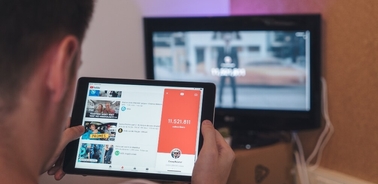- Home
- News And Events
- What’s Going On
- The Perils Of Advertising Luxury Brands On A Mobile Ott Platform
The Perils of Advertising Luxury Brands on a Mobile OTT Platform

We all have the experience of waiting those five seconds of mandatory viewing of pre-roll ads that appear before the YouTube video clips we want to see. There are very few things in life more exasperating than forced viewing of video ads. According to our study, however, looks like most of us are sufficiently patient, since we found that viewers wait through those mandatory viewing (in our study, 15 seconds) in 70-80% of the cases.
Jikyung (Jeanne) Kim, Assistant Professor in Marketing at IE Business School
For most brands, mobile over-the-top (OTT) platforms that offer pre-roll (or mid-roll and post-roll) ads are a great place to put their advertising messages. Pre-roll ads appear just when consumers’ attention is at its height --- they are expectant to see that highlight of the TV show they missed yesterday. When an ad appears just at that moment, their attention spills over to the ad, making the brand message more memorable. What is more, the mobile phone screen is just big enough to see one video ad, making it very difficult for them to look at anything else. When the ads match the program content (for instance, the same celebrity appearing in both ads and the program clip. It is a practice called content matching or contextual advertising), the view-through rate is even higher.
Great news for all kinds of brands, right?
According to our study, “View Completion of Video Pre-Roll Ads for High-End Brands”, it’s not necessarily the case for luxury brands.
After analyzing 1.4 million video ad viewing behavior by 961,048 unique viewers on a popular South Korean mobile OTT service, we advise that luxury brands should really evaluate their strategy before committing a large chunk of their advertising dollars in this rising medium. For instance, we investigated the view-through rate for luxury brands and found such ads have about 5% lower view-through rate than other brands. Considering that luxury brands appeal to those few who can afford them, it is not surprising that an unprofiled audience quickly loses interest when they see an ad for Chanel Sublimage eye cream (retail priced at US $1,180/500g).
We studied further what makes luxury brand ads more (or less) compelling. We focus on the part of the creativity that can help highlight the strength of such brands: luxury ad appeal. Some ads feel luxurious to viewers because they are aesthetically pleasing, artistic, not information-oriented, abstract, hedonic, have classical music as their BGM, and for a host of other reasons. Not all luxury brand ads have luxury ad appeal, and many lower-end brands use such an appeal to market their brands. Luxury ad appeal is generally more effective in making the audience sit through the ad. So one would think it should work better for luxury brands.
But it doesn’t
Surprisingly, luxury ad appeal is about 10% less effective for luxury brands than for regular brands. What is more, content matching leads to a lower view-through rate when the featured brand is a luxury one. We explain this result by focusing on an unfortunate superpower of consumers (for advertisers, anyway) called ad awareness and persuasion knowledge. Many times, consumers are aware of the fact that what they are watching is an attempt of salespeople to sell something to them with all they have got. If it is something consumers are interested in, they might keep listening. If it is for something they have little interest in, they disengage or fight back the persuasion attempt. It may be the case with luxury brands: when consumers realize it is for a product they are not going to buy sometime soon, they stop viewing the ad.
Persuasion starts with exposure. If consumers do not even finish watching 15 seconds of an ad, what chance do luxury brand managers have in changing their attitude and increasing purchase intention? We recommend to luxury brands and OTT platform managers to use at least some kind of profiling to target those who would be interested in the offering. Luxury ad appeal does not precisely hurt but does not help much --- ad creators should think of some other creative elements that could hold viewers’ attention. Finally, content matching may even hurt viewership completion when used injudiciously and should be practiced with caution.